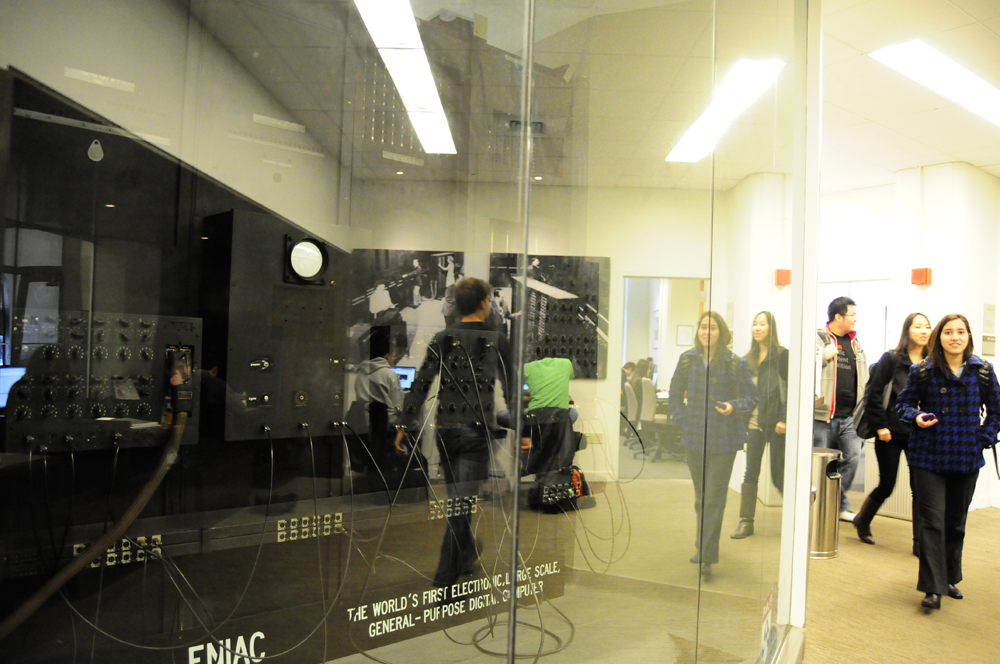The ENIAC is such a great piece of Philly tech lore that we’re re-upping these 10 things you need to know about the first supercomputer from its 65th birthday in 2011:
- The ENIAC was the first computer built to take full advantage of electronic processing speeds and to “think” for itself using conditional branching and nested subroutines. It was entirely electronic and is credited with introducing the modern, computer industry. Not bad, Philly. Not bad.
- The ENIAC was first made public on Friday, Feb. 15, 1946, not, as others have suggested, on Feb. 14, as confirmed by Philly Mag. (The press release was distributed Feb. 14, as noted on WHYY’s Radio Times.)
- The ENIAC vision is largely credited to physicist John Mauchly and young engineer J. Presper Eckert, through U.S. Army experimental funding. Here’s more oral history on that.
- The ENIAC belongs to the Smithsonian, though small pieces are on loan at the University of Pennsylvania, in Minnesota and elsewhere. More info.
- Mauchly and Eckert, went on to create UNIVAC, the first programmable computer designed for business applications. More info.
- Originally designed for the production of ballistic tables for World War II, the machine was not completed until after the war ended. It was widely used for scientific computation until the early 1950s. More info.
- Who gets credit? “With the advent of everyday use of elaborate calculations, speed has become paramount to such a high degree that there is no machine on the market today capable of satisfying the full demand of modern computational methods.” From the ENIAC patent (U.S.#3,120,606) filed on June 26, 1947. The patent was later invalidating by a legal rebuke.
- By the numbers: “The ENIAC contained 17,468 vacuum tubes, along with 70,000 resistors, 10,000 capacitors, 1,500 relays, 6,000 manual switches and 5 million soldered joints. It covered 1,800 square feet (167 square meters) of floor space, weighed 30 tons, consumed 160 kilowatts of electrical power.” More info. ENIAC could hold 20 10-digit numbers, and you could park a school bus inside it. More info.
- A quick end: By March 1947, a new electronic super calculator was touted as “capable of making the Army’s world-famed ENIAC look like a dunce.” A series of variations, like the BINIAC followed.” At 11:45 p.m., Oct. 2, 1955, with the power finally shut off, the ENIAC retired.
- A group of female “computers” was instrumental in building the ENIAC and a documentary focused on their role in the broader World War II fight.
Now watch this, from the BBC in 1991:







